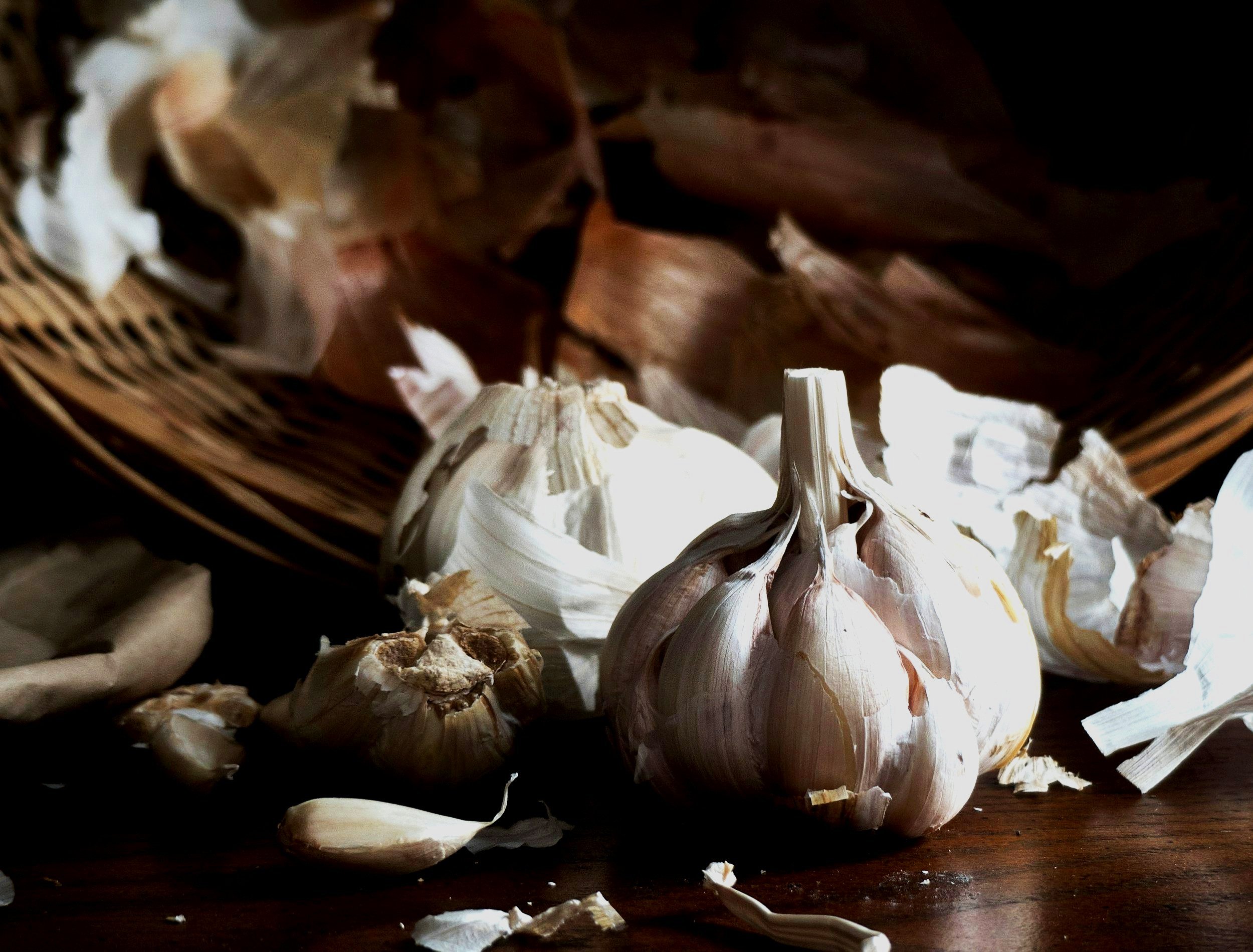
The magic of garlic
A bit of history…
Garlic (Allium sativum) is widely recognised not just for its culinary properties but also for its impressive array of health benefits. It is closely related to other plants like onions, shallots, leeks and chives. It originates from Central and South Asia and has been used and cultivated for thousands of years. Ancient records reveal its use by the Sumerians around 2600-2100BC, who valued garlic for its medicinal properties. The Egyptians recognised garlic as a sacred foods and it is thought that the laborers who constructed the pyramids consumed garlic to boost their strength and endurance. Garlic was also widely used through ancient Greece and Rome and through the medieval times up until today.
Different types of garlic
The garlic plant is divided into two main subspecies, which further branch into ten major groups and hundreds of distinct varieties or cultivars. The first subspecies known as hard neck garlic, includes types such as porcelain garlic, rocambole garlic, and purple stripe garlic. The second subspecies known as soft neck garlic, features varieties like artichoke garlic, silver skin garlic, and creole garlic. Hard neck garlic has a stronger more pungent flavour while soft neck garlic has a milder taste. They may be distinguished from the fact that hard neck garlic tends to form a single row of larger cloves around the central stalk while soft neck produces multiple rows of smaller cloves. The one that is most commonly found in grocery stores is the soft neck garlic.
Chemical compounds in garlic
It is the chemical compounds found in garlic that confer it its special medicinal properties.. Amongst its most notable compounds are those that contain sulfur such as allicin which confer garlic many of its medicinal properties. Besides sulfur compounds garlic is also packed with a range of other beneficial phytochemicals like flavonoids and phenolic compounds (e.g. quercetin, gallic acid) and saponins. Garlic also contains vitamins and minerals like vitamin C, vitamin B6, manganese and selenium.
Medicinal properties of garlic
Thanks to its wide array of chemical compounds, garlic has a wealth of medicinal properties:
1. Antimicrobial Properties - Garlic is a powerful antibacterial, antiviral, antifungal and antiparasitic agent. It has been shown to be effective against a wide range of bacteria, including E. coli, Staphylococcus aureus, and Salmonella. Allicin, formed when garlic is crushed or chopped, plays a significant role in garlic’s antibacterial action. It can also help prevent and reduce the severity of viral infections, including the common cold and flu, and is effective against yeasts like Candida. Its anti microbial properties make it an excellent food to treat Small Intestinal Bacterial Overgrowth (SIBO). What is interesting is that fresh garlic has high selectivity in killing pathogenic bacteria in the gut while sparing Lactobacillus and Bifidobacteria species that need higher lethal doses of garlic.
2. Cardiovascular Health - It is effective in reducing various cardio vascular risks factors such as lowering LDL cholesterol while raising HDL cholesterol. It also helps lower blood pressure by relaxing blood vessels. It has a blood thinning effect reducing the chances of blood clots and improving blood flow.
3. Antioxidant and Detoxifying Effects - Garlic is rich in antioxidants, which help protect cells from oxidative stress and damage caused by free radicals. This reduces the risk of chronic diseases like cancer, cardiovascular disease, and neurodegenerative conditions. It also boosts the production of glutathione, one of the body's most important antioxidants supporting also liver function and detoxification.
4. Anti-inflammatory Properties and Immune system Support - Garlic contains compounds that have strong anti-inflammatory effects and it stimulates the immune system. This can help reduce inflammation in conditions like arthritis, asthma, and other inflammatory diseases. The antioxidant and anti-inflammatory properties of garlic contribute to its anti-aging effects, protecting the body from cellular damage and slowing down age-related degeneration.
5. Gut Healtth - Garlic has prebiotic properties, promoting the growth of beneficial gut bacteria like Lactobacillus and Bifidobacterium while inhibiting harmful bacteria. This helps maintain a healthy gut microbiome.
6. Blood Sugar Regulation - Garlic has been shown to improve insulin sensitivity and regulate blood sugar levels, which can be beneficial for people with type 2 diabetes or those at risk of developing it.
How to eat garlic
However, there is a problem…garlic confers a distinctive aroma to our breath that not everyone appreciates. To reduce garlic smell the best thing is to eat it with yoghurt, like the Greeks do in their tzatziki. You can add cucumber if you want, but also simple garlic and yoghurt will already reduce the smell. Before eating garlic it is important to crush it, chop it or mince it to release the enzyme that activates allicin. If you leave it for 10 minutes before using it you have maximised allicin release. Try to incorporate magic garlic in your food every day for a healthy diet!
